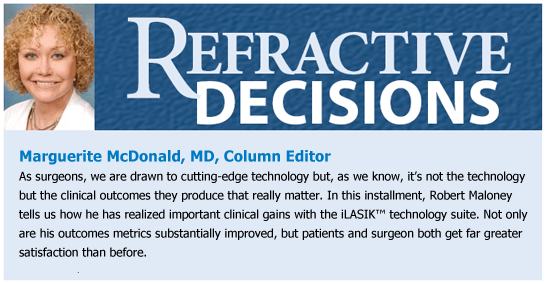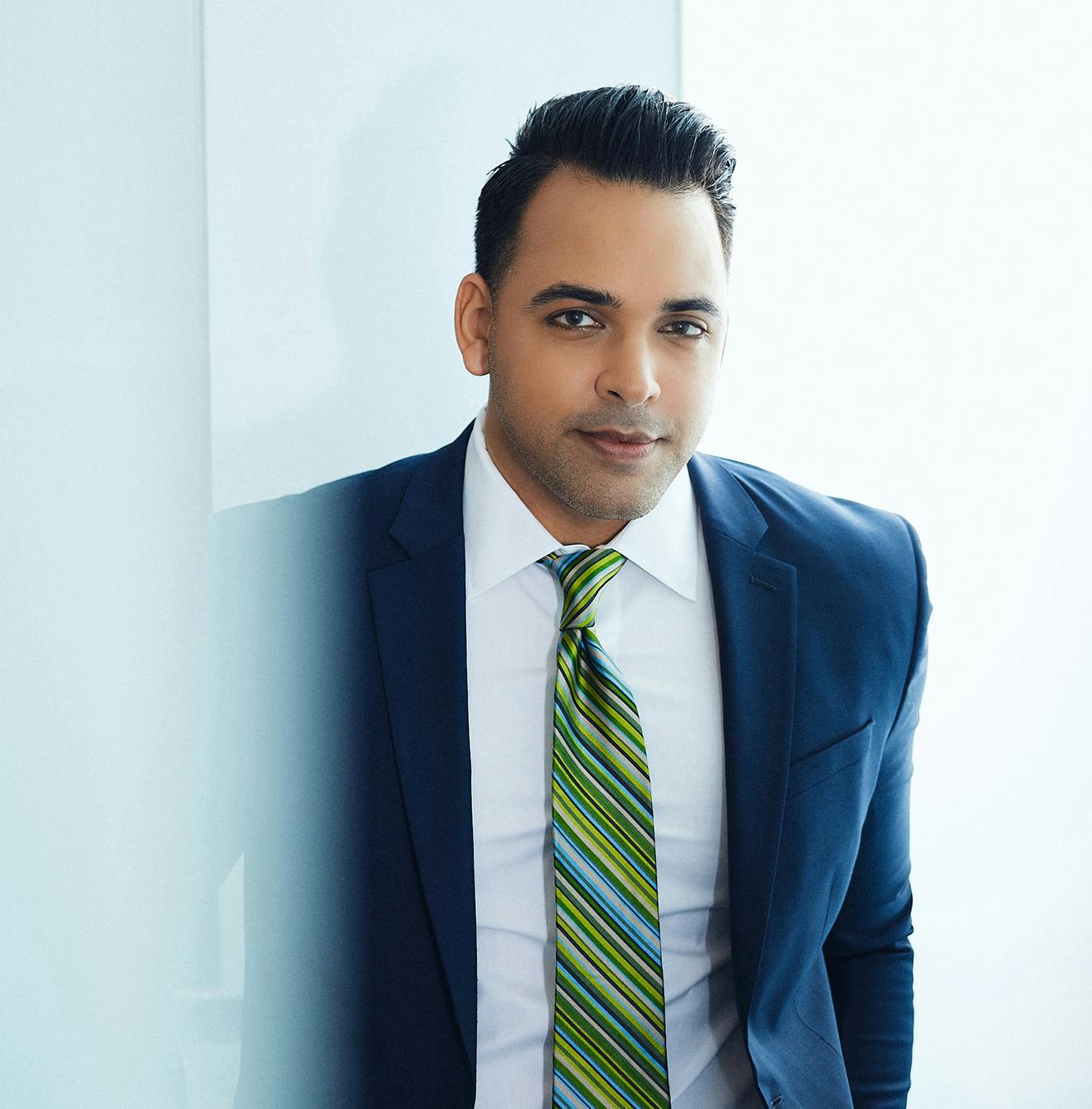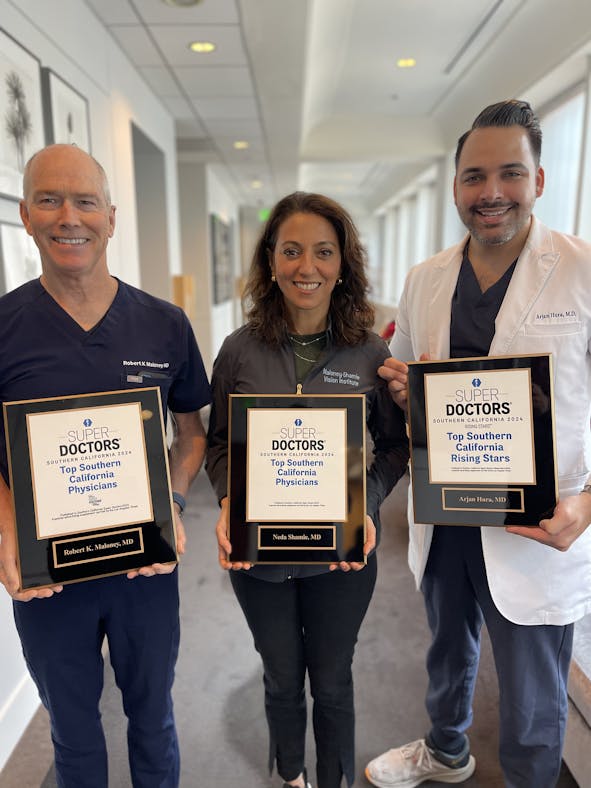
Clinical Outcomes With The All-laser Lasik Technology Suite
Robert K. Maloney, MD, MA(Oxon)
The combination of technologies that make up the All-Laser LASIK suite have made a significant difference in the quality and consistency of my refractive surgery outcomes. With this technology, we are able to achieve better visual acuity and better quality of vision in patient after patient. We now enjoy our lowest enhancement rate ever.
"We now enjoy our lowest enhancement rate ever."
ACUITY AND QUALITY
When we first started using the AMO excimer laser platform at Maloney-Shamie-Hura Vision Institute in 1998, we achieved very good results. When we upgraded to the STAR S4™ excimer laser and WaveScan WaveFront™ system, results clicked up a notch, with clearly superior outcomes in two core metrics: percentage of eyes with 20/15 visual acuity and number of patients reporting excellent night vision. It was also impressive to see how quickly patients arrived at those points—after the conversion we began to see patients who could read the 20/15 line on postoperative day 1, and patients were reporting the absence of night vision symptoms in the week following surgery.
We attribute both of these changes to the Advanced CustomVue™ procedure, which uses wavefront measurement to detect aberration and create the corrective ablation pattern. The Fourier mathematics at the heart of the WaveScan WaveFront™ software are able to precisely reconstruct the patient's individual wavefront. This technology is so accurate, that when we perform enhancements, we are often able to reduce preoperative aberrations, which is very useful for patients who have good visual acuity but complaints about quality of vision.
LOW ENHANCEMENT RATE
In 2006, we started using the IntraLase™ FS 60 kHz femtosecond laser. Soon after that, we found our enhancement rate plummeting Consider some of our recent numbers: from January 2008 to August 2008, we performed a total of 1,301 procedures using All-Laser LASIK technologies. As of the beginning of 2009, we had performed a total of 36 additional procedures in this group for an enhancement rate of 2.76%. To put this in context, the majority of our enhancements are performed within 3 months of the initial procedure, and I have a low threshold for enhancing outcomes-I enhance almost every patient who doesn't achieve 20/20. Even so, our enhancement rate is less than 3%.
Additionally, of the 1,301 procedures performed, more than 300 were in young low myopes (less than –3.50 D and under 43 years old). In this population, we performed only one enhancement. In other words, of the small number of enhancements we did perform, almost all were on eyes that were harder to correct to begin with.
We attribute these excellent results to the precision of the Advanced CustomVue™ platform, the maturity and refinement of the laser system, and the IntraLase™ femtosecond laser, which produces perfectly centered flaps virtually every time. The consistently smooth bed and precisely positioned flap in turn help to ensure a great ablation every time.
PRACTICE SATISFACTION
The All-Laser LASIK technology is so consistent that I can be sure of achieving the target outcome, time and time again. This consistency of outcome has allowed me to develop my own nomograms, which further refine outcomes. The result is extreme confidence in my equipment and the All-Laser LASIK procedure.
What is truly most impressive, though, is the large number of really happy patients and the very tiny number of unhappy patients. And as all refractive surgeons know, unhappy patients not only require significantly more of a practice's time and resources, they are also corrosive to the enjoyment of what we do, which is make people's lives significantly better with a single intervention. The All-Laser LASIK suite allows me to improve patients lives day in, day out, without worry.
Robert K. Maloney, MD, MA (Oxon), is one of the Directors of the Maloney-Shamie-Hura Vision Institute in West Los Angeles, CA, and clinical professor of ophthalmology at University of California, Los Angeles. Support for this column is provided by an educational grant from AMO.






